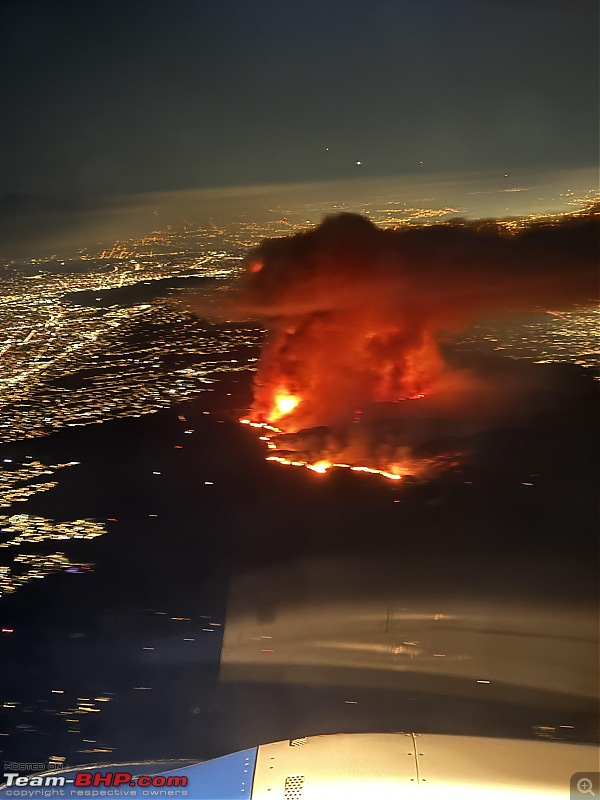Quote:
Originally Posted by Jeroen  It’s a matter of scale and to what scale are you prepared. |
True, that's why we design and put more emphasis on passive protections, rather than active fire fighting (which is also there). Because,
1) we know it can cause human loss, worst case if some outsider innocent life gets involved,
2) it can cause severe economic losses,
3) unwanted/unplanned shutdown of a critical facility, our strategic storage tanks cannot run low at any cost,
4) its a big big reputational loss,
5) the premium we would have to pay for the insurance is directly linked to the mitigations procedures we follow, both active and passive.
So when we know what are the consequences of the hazards, we can better plan for it.
Let me throw an example, which is similar to what's happening at LA, but for a smaller area to deal with, flaring is a normal procedure at any O&G facility, it is a necessary evil and usually done away from where refining critical processes are being done, because we are dealing with a continuous live open fire, not preferable to have it close by, hence a buffer zone is created. Generally around a 800m to 1Km away from the facility, so one can safely say it's a 1Km radius zone, depending on the number of flares in the region, one can have multiple flares and its an unmanned region, due to the hazards of flare radiation.
Now in this area only the process pipes pass through carrying the unwanted gasses which needs to be flared/burned. Its on similar lines to farting, except it's not put on fire.

This flaring area is complete barren land, its unmanned and generally no maintenance works are supposed to happen there and is mostly neglected. Over a period of time we have unwanted grass popping up over the entire stretch, which gets dry and the open flame nearby from the flare creates a conducive environment for the fire to propagate and risk spreading. One can see the uncanny similarity of starting the bush fires at LA.
So what passive protection we undertook,
1) We tweaked our SOP's and procedures with SME's being involved,
2) we floated the contract to clear off the grass from that flaring zone annually. Initially, that worked well, but it was costing a lot of money and safety issue, we cannot let common people, unskilled labors, in hundreds to enter the facility on daily basis to cut the grass, it wasn't a viable solution in long run,
3) Benchmarked the concerns with the best practices being used in similar industries at other locations, there was a eureka moment, simple and yet cost effective brilliant idea by someone and now this is an industry wide accepted practice, a layer of gravel of certain thickness, filled the whole area with gravel (100mm), there is no grass growth since then, one time investment and a 5 year monitoring plan to assess the situation.
Reason for me to tell is, passive protection is more beneficial (for petrol heads - like seatbelts or even airbags), than the active protection. Fire fighting is active protection. Passive protection will help prevent a fire from spreading or resist the initial ignition or even let the fire come in close vicinity to the communities, because that's what you want to protect here.
I know its simple said being done, but the administration could create a buffer zone between the communities and the forest with either graveling the area or concreting or something which could passively mitigate the hazards, rather than actively participating in it, especially when one already knows its a common phenomenon in that region and is carrying a higher degree of risk and is an immediate danger to someone's life.
Lastly, please please guys have a fire extinguisher and smoke detectors installed in your homes, doesn't cost much and can be a difference between life and death. It's a one time small investment, I think all of us who can afford cars, can afford these small things too.
Oh yes, this is the picture of our last line of defense, in case of a toxic gas release at work. I have heard this is the same thing which pilots too carry in their cockpit, as their last safeguard.
 (10)
Thanks
(10)
Thanks

 (26)
Thanks
(26)
Thanks
 (4)
Thanks
(4)
Thanks

 (3)
Thanks
(3)
Thanks
 (24)
Thanks
(24)
Thanks
 (6)
Thanks
(6)
Thanks
 (13)
Thanks
(13)
Thanks
 (12)
Thanks
(12)
Thanks
 (3)
Thanks
(3)
Thanks
 (8)
Thanks
(8)
Thanks















 This flaring area is complete barren land, its unmanned and generally no maintenance works are supposed to happen there and is mostly neglected. Over a period of time we have unwanted grass popping up over the entire stretch, which gets dry and the open flame nearby from the flare creates a conducive environment for the fire to propagate and risk spreading. One can see the uncanny similarity of starting the bush fires at LA.
This flaring area is complete barren land, its unmanned and generally no maintenance works are supposed to happen there and is mostly neglected. Over a period of time we have unwanted grass popping up over the entire stretch, which gets dry and the open flame nearby from the flare creates a conducive environment for the fire to propagate and risk spreading. One can see the uncanny similarity of starting the bush fires at LA.